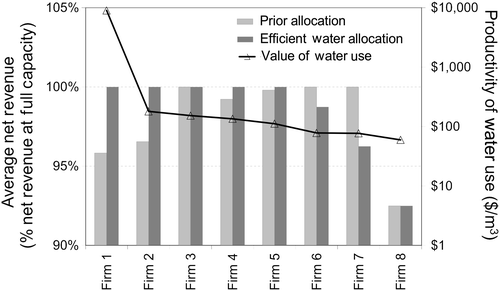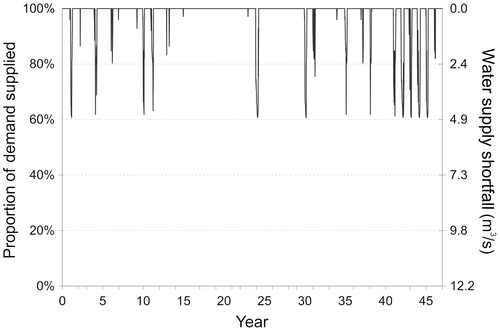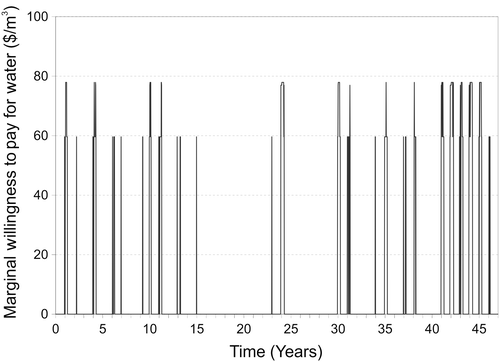Figures & data
Table 1. Water conservation regulation for the lower Athabasca RiverTable Footnotea.
Table 2. Licensed water-use, seniority rank of licences and modelled forecast water demand by year 2020 (approx.) by oil sands firm.
Figure 1. Marginal willingness to pay by oil sands industry for water supplied from the Athabasca River (~year 2020). Excludes technology options and steam assisted gravity drainage (SAG-D) outlier.
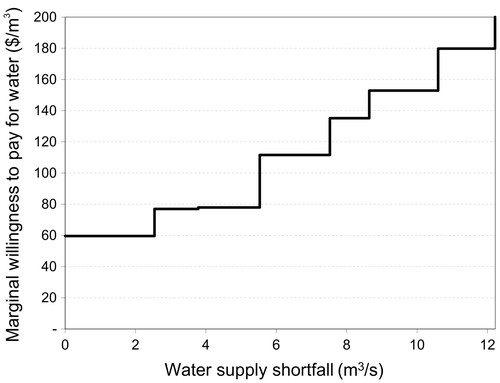
Table 3. Parameters tested by sensitivity analysis (applied to all options).
Figure 2. Modelled average frequency of the flow conditions necessary to trigger water restrictions in each week over the calendar year.
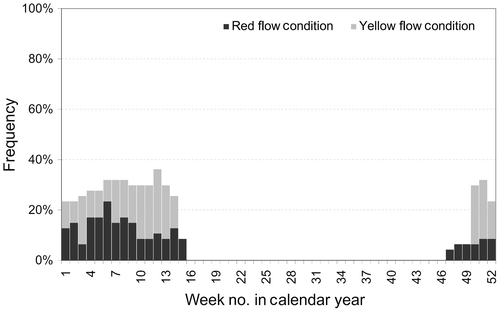
Figure 4. Likelihood and magnitude of water restrictions assuming Athabasca River flow is 10% less than historic records and 12.2 m3/s water demand (~year 2020).
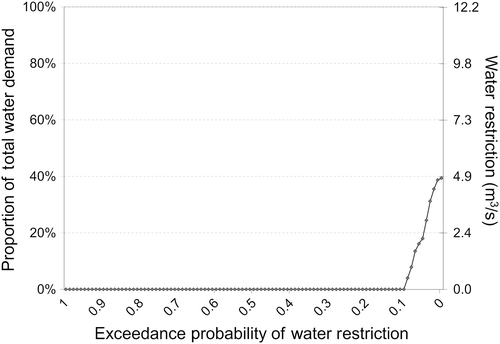
Figure 5. Distribution of firm revenue as a proportion of full production under prior allocation system. Firm productivity of water use from Athabasca River shown on the secondary axis (log scale).
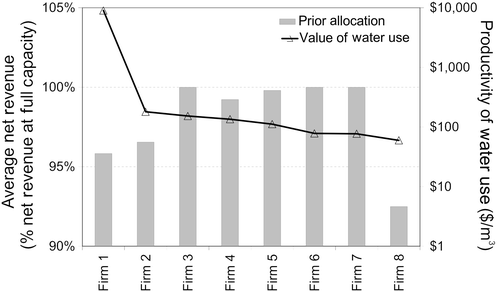
Figure 7. Likelihood of marginal values of water under efficient water allocation, measured in dollars per m3.

Figure 8. Distribution of firm revenue as a proportion of full production under efficient water allocation. Firm productivity of water use from Athabasca River shown on the secondary axis (log scale).
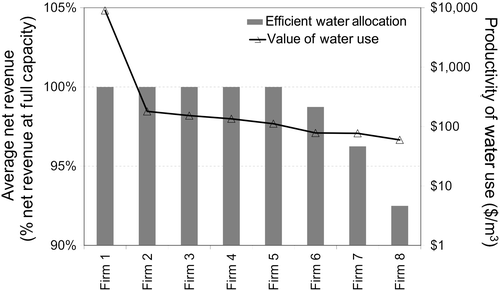
Figure 9. Likelihood and magnitude of supply shortfall (~year 2020) with use of consolidated tailings and increased recycling, as compared to prior allocation.
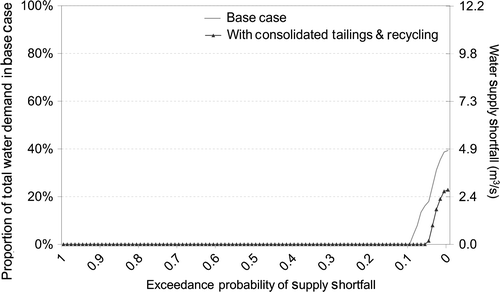
Figure 10. Marginal willingness to pay by oil sands industry for water supplied from the Athabasca River (~year 2020) with use of consolidated tailings and increased recycling, as compared to efficient water allocation.
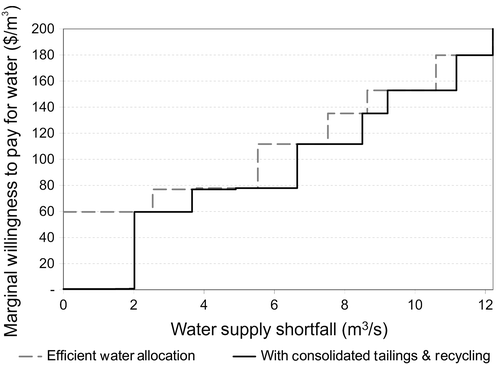
Figure 11. Likelihood of marginal values of water from the Athabasca River under efficient water allocation with consolidated tailings and increased recycling, as compared to efficient water allocation only.
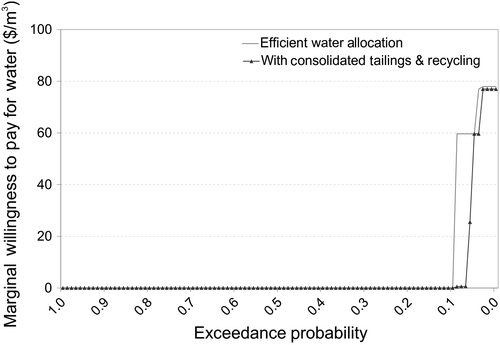
Table 4. Net present value of policy and technology options, $ million.
Figure 12. Net present values of policy and technology options compared to base case of prior allocation, $ million.
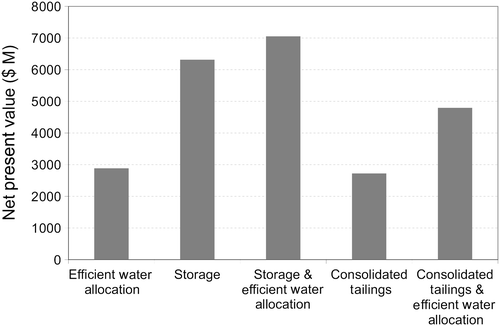
Figure 13. Distribution of firm revenue as a proportion of full production, comparison of prior allocation and efficient water allocation. Firm productivity of water use from Athabasca River shown on the secondary axis (log scale).
